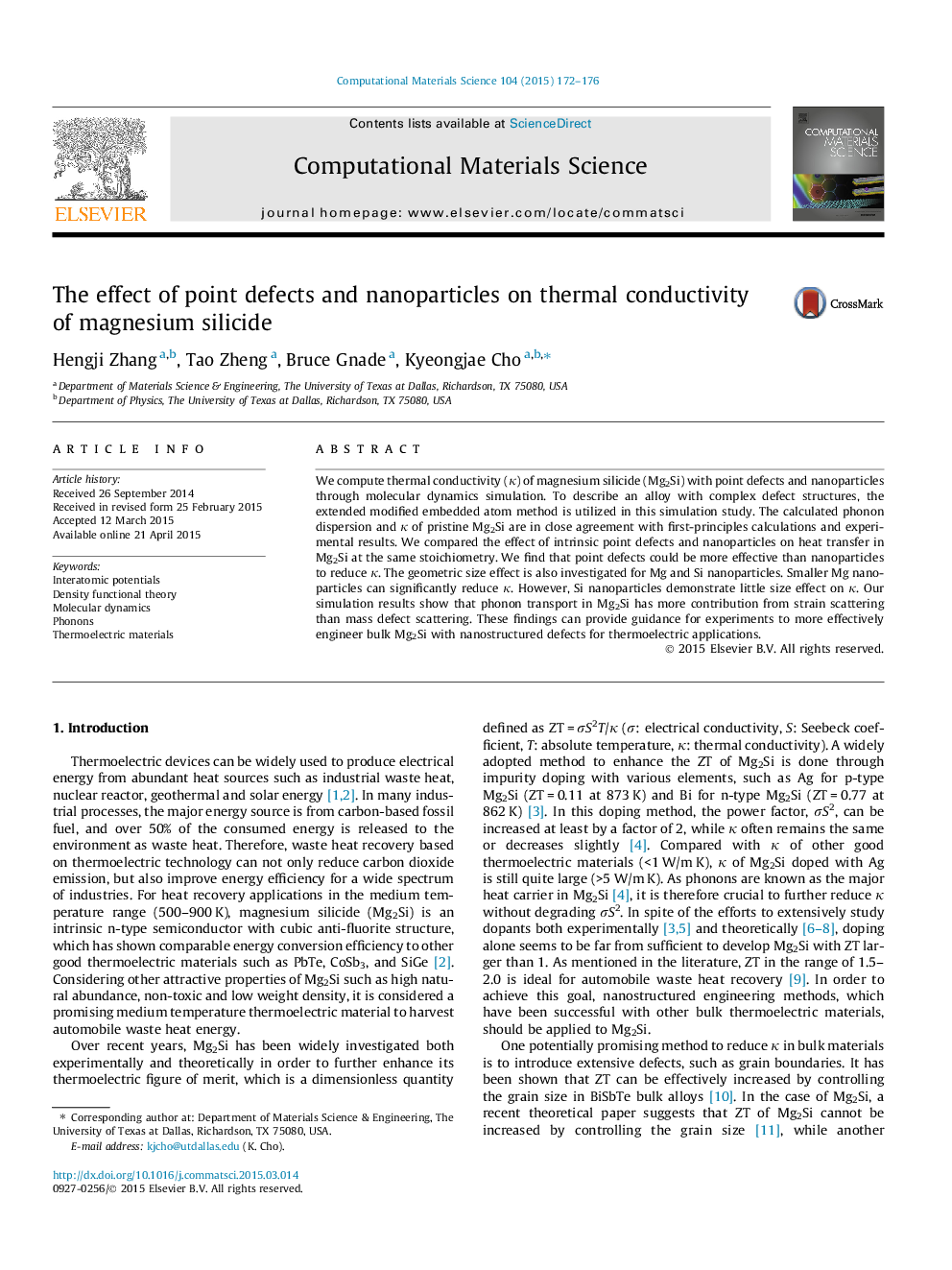| Article ID | Journal | Published Year | Pages | File Type |
|---|---|---|---|---|
| 1560243 | Computational Materials Science | 2015 | 5 Pages |
•Mg–Si potential was developed based on extended modified embedded atom method.•We calculate thermal conductivity of Mg2Si with point defects and nanoparticles.•Point defects are more effective than nanoparticle to reduce thermal conductivity.
We compute thermal conductivity (κ) of magnesium silicide (Mg2Si) with point defects and nanoparticles through molecular dynamics simulation. To describe an alloy with complex defect structures, the extended modified embedded atom method is utilized in this simulation study. The calculated phonon dispersion and κ of pristine Mg2Si are in close agreement with first-principles calculations and experimental results. We compared the effect of intrinsic point defects and nanoparticles on heat transfer in Mg2Si at the same stoichiometry. We find that point defects could be more effective than nanoparticles to reduce κ. The geometric size effect is also investigated for Mg and Si nanoparticles. Smaller Mg nanoparticles can significantly reduce κ. However, Si nanoparticles demonstrate little size effect on κ. Our simulation results show that phonon transport in Mg2Si has more contribution from strain scattering than mass defect scattering. These findings can provide guidance for experiments to more effectively engineer bulk Mg2Si with nanostructured defects for thermoelectric applications.
